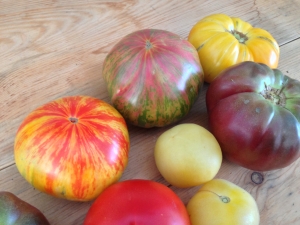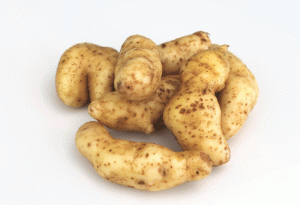A Few Fun Facts about Hybrids and Heirlooms
 In the realm of farming and gardening the debate over hybrids and heirlooms rages on. But just what are hybrids and heirlooms? Is one really better than the other? And why should you care?
In the realm of farming and gardening the debate over hybrids and heirlooms rages on. But just what are hybrids and heirlooms? Is one really better than the other? And why should you care?
Hybrids are plants that have been crossbred to produce a new, uniform variety, often with specific traits in mind. Disease-resistance, uniformity, and early maturation are examples of such traits. The ‘Crimson Carmello’ tomato is one of the more notable hybrids, bred for its disease-resistance, height, vigorous growth, and juicy fruit. Paradoxically, planting the seeds produced by hybrid fruit/vegetables will not yield similar harvests; to get the same hybrid you need to make the original cross using the same parent plants. These crosses are called F1 Hybrids, or First Filial Generation.
Because they can be bred to exhibit particular traits, hybrids have many advantages. Earlier maturity, better yield, less care, disease resistance, enhanced productivity, and better flavor can all be selected for. For these reason, hybrids have wide commercial applications. Hybrids also have a uniform look and predictable growing season, which help foster sales.
Heirlooms, on the other hand, refer to a plant variety that is open-pollinated, hand-selected, at least 50 years old, and specific to an individual region or location. (Open-pollination is just pollination by wind or bees.) Heirlooms are saved and propagated because of their superior quality—shelf-life, disease-resistance, taste, color, or other positive traits. And while heirlooms might not always be the most commercially-viable option (size, harvest time, and appearance can vary wildly) they are generally the most flavorful, most attractive, and most diverse. This is because the plant has been allowed to ‘evolve’ to its local environment.
 In the end, hybrids and heirlooms both have important applications. The decision comes down to you, the consumer. Which do you prefer?
In the end, hybrids and heirlooms both have important applications. The decision comes down to you, the consumer. Which do you prefer?






